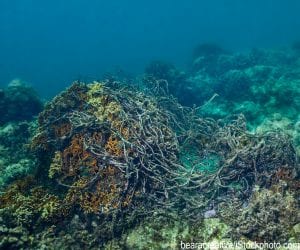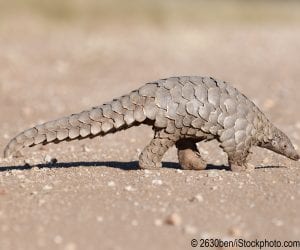We, all people, are great apes. And yes, that includes you reading this post. Large, tailless, and hairy, we roam the land using our opposable thumbs to do elaborate behaviors and showing off our pretentiously big heads. We great apes are truly amazing creatures, with complex social systems and often incredible cognitive capabilities. And our marvelous and extraordinary family just got bigger.
In the lofty mountain forests of Sumatra, Indonesia, a unique species of great ape identified as the Tapanuli orangutan (Pongo tapanuliensis) has been discovered. Evolutionary biologists and anthropologists analyzed the genetics, anatomy, and behavior of orangutans living in the Batang Toru forest and determined they represent a third species of orangutan distinct from their Bornean and Sumatran cousins. This is the first species of great ape described by scientists in almost a century, making us a family of eight: Bornean, Sumatran, and Tapanuli orangutans, eastern and western gorillas, chimpanzees, bonobos, and humans.

Recently Discovered, Soon to be Recently Extinct?
As truly amazing as it is, the discovery of the Tapanuli orangutan is also terribly sobering. With only 800 individuals in the wild scattered among three disconnected patches of protected forest, this species is critically endangered. It is estimated that orangutan populations have fallen by 75% over the last century. All orangutans are threatened by extensive habitat loss as people clear more forests for agricultural land or lumber products. Orangutans are also stolen from the wild to be sold in the illegal pet trade, hunted for food, and killed to keep them from damaging crops. These activities driving the decline of orangutans may increase or intensify to meet the demands of a growing human population. Extinction is a grave and immediate danger for Tapanuli orangutans and their cousins.
Natural Wonders Yet Undiscovered…
The discovery of this new ape species at the brink of extinction is representative of a global crisis in conservation biology. On the one hand, scientists estimate that as much as 86% of all species on land and 91% of those in seas have yet to be identified and described. But on the other, human activities are driving the worst global extinction epidemic since the loss of the dinosaurs. How many species will disappear before they are discovered? Some of these unknown species could be creatures with incredible intelligence and fascinating behavior, like the Tapanuli orangutan. We could find fungi living in coral reefs, omnivorous rats, or maybe yet another species of beetle (there are already over 350,000 described)! We can’t know unless they survive this extinction crisis.
Our Reliance on Earth’s Biodiversity
I understand if you and your students like orangutans better than beetles (we do share 97% of our DNA with the former after all), but every species plays a role in their environment and contributes to the healthy ecosystems that all life – including us humans – intimately depends on. From the food we eat to the medicine we produce to the very air we breathe, we rely on the delicate systems built on the myriad contributions of countless species. Take orangutans as an example: they eat hundreds of different fruits and disperse seeds across the land in their dung. This prudent “gardening” carried out by orangutans is essential for a growing, flourishing rainforest.
The 800 Tapanuli orangutans in the wild demand comprehensive action to ensure the survival of their species and their forests. We need the orangutans, and right now they need us. The stakes are high, and the threats are daunting, but we can’t let ourselves or our students be overwhelmed into inaction or apathy.
Saving Our Orangutan Cousins
There is hope on the horizon for Tapanuli orangutans. Governments have promised to tighten the management and security for protected forests where orangutans live. Additionally, multiple organizations focused on orangutan conservation are working to reconnect and expand habitats, promote sustainable agriculture and forestry, and helping governments stop the illegal pet trade.
There’s a lot you and your students can do, too: reduce, reuse, and recycle paper products, and try to buy Forest Stewardship Council (FSC)-certified brands; seek out personal care products and snacks that are made with sustainable palm oil (here’s a list); support groups like Orangutan Foundation International, Sumatran Orangutan Society, and World Wildlife Fund that are committed to socially-minded conservation; finally, spread the word! Never underestimate the value of raising awareness in your communities.
Activities for Budding Conservationists
Understanding the interconnectedness of nature and the importance of Earth’s species is an important step in becoming a biodiversity champion. Population Education offers several lessons and activities that can help you cultivate your students’ inner conservationist! Here are just a few to get you started:
Web of Life – this elementary level activity illustrates the interconnected nature of Earth’s ecosystems with an interactive story about the members of a forest community.
World of Difference – using a simulation, probability exercises, and discussion, this activity teaches middle level students the importance of biodiversity and how human population growth can affect Earth’s biodiversity.
Oceans Away – high school students will learn about how human activities and demands are impacting the largest habitat on Earth.
Image credit: Orangutan mother and offspring courtesy of Larry Master




